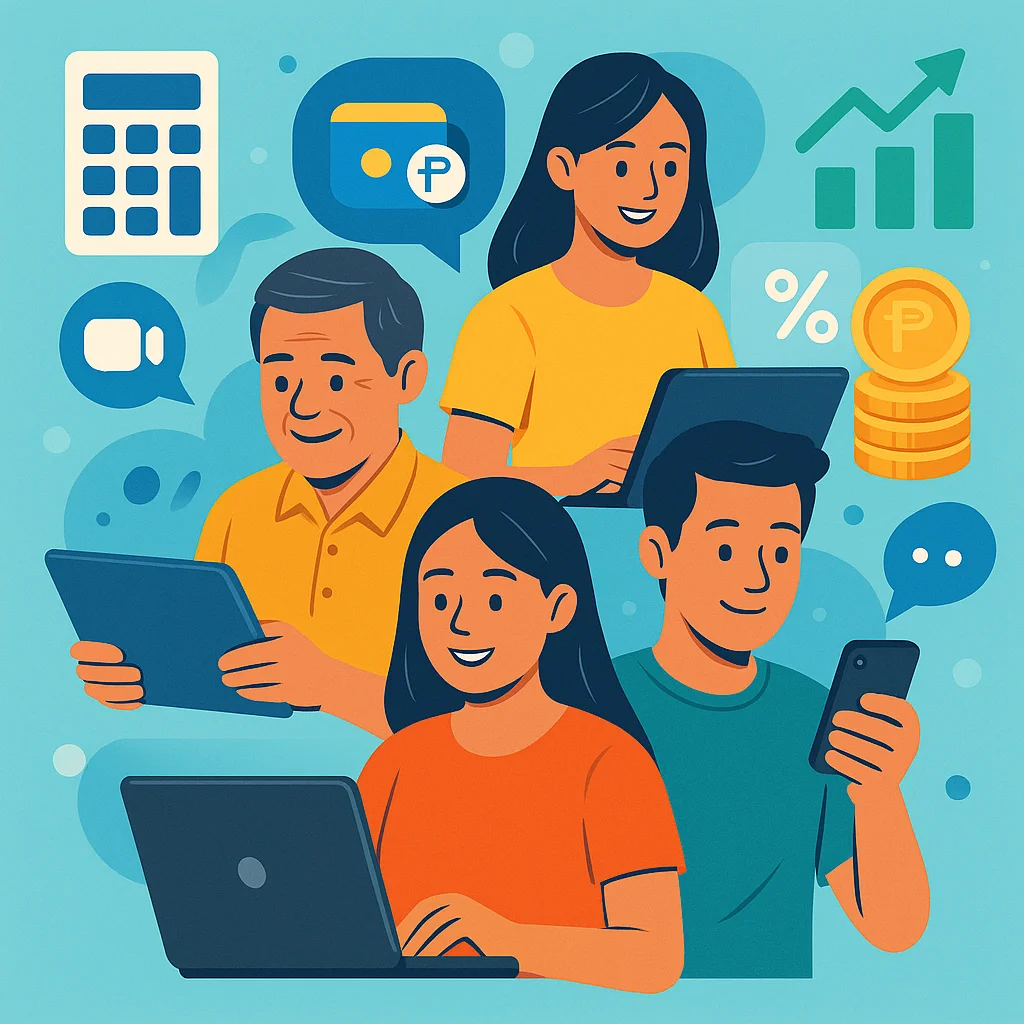Essential Tech Tools for Every Modern Pinoy

Filipinos today use technology to manage work, family, and personal tasks. The right digital tools help with daily routines, simplify complex processes, and keep people connected. Whether working abroad or at home, Filipinos rely on technology to organise finances, communicate, and handle professional and personal matters.
For those seeking practical solutions, Pinoy compute provide free online tools for OFWs provide calculators and digital resources tailored to the needs of overseas Filipino workers, freelancers, business owners, and professionals. These resources support users in managing money, working efficiently, and maintaining strong connections with loved ones.
Financial Calculators: Simplifying Money Management
Managing money is a priority for many Filipinos, especially with government contributions, taxes, and benefits involved. Pinoy Compute offers a set of free online tools for OFWs and local workers to handle these requirements. These calculators help users estimate payments, track savings, and understand benefits.
The Philippines Tax Calculators cover income tax, estate tax, and capital gains tax. These calculators allow users to estimate tax obligations quickly, supporting better planning and budgeting. Accurate calculations help avoid unexpected costs during tax season.
The SSS Contribution Calculator helps users determine monthly Social Security System (SSS) contributions. It also projects retirement benefits and checks loan eligibility. This tool supports retirement planning and helps workers understand their entitlements.
PhilHealth Contributions calculators show required payments and potential benefits. This information helps users keep track of health insurance and understand coverage for maternity or hospitalisation.
The Pag-IBIG Contribution Calculator is useful for those saving for a home or building savings. It calculates monthly contributions and outlines available benefits. The 13th Month Salary Calculator checks bonus amounts, which is important for employees budgeting for the year.
The Pag-IBIG MP2 Calculator estimates savings and returns for the MP2 savings scheme. This tool helps users compare the benefits of voluntary savings with regular contributions. While the MP2 programme offers higher dividends, the exact rate changes yearly based on fund performance.
These calculators are especially helpful for OFWs who manage finances from abroad. They allow users to stay up to date with government rules and make the most of available benefits. By using these tools, Filipinos can plan for the future and avoid common financial mistakes.
Productivity and Collaboration Tools for Filipino Workers
Remote work and digital entrepreneurship have become common for many Filipinos. Freelancers, virtual assistants, and remote employees use productivity tools to organise tasks and communicate with clients and teams.
Trello and Asana are project management apps that use visual boards and timelines. These tools help users track assignments, set deadlines, and monitor progress. They are suitable for both individual workers and teams.
Google Workspace includes Gmail, Google Docs, and Google Sheets. This suite allows real-time editing, file sharing, and cloud storage. Teams can work together on documents, spreadsheets, and presentations from different locations. Solo workers benefit from secure storage and easy access to files.
Zoom and Microsoft Teams are video conferencing tools. They are essential for meetings, webinars, and presentations. These platforms help Filipinos maintain professional connections regardless of distance. Video calls support collaboration and build trust with clients and colleagues.
By using these productivity tools, Filipino workers can organise their schedules, communicate effectively, and balance work with personal life. These tools support both office-based and remote work, helping users adapt to changing work environments.
Digital Payment and E-Wallet Solutions: Fast and Secure Transactions
Cashless payments are now common in the Philippines. Digital wallets such as GCash, Maya, and GoTyme Bank provide secure ways to pay bills, transfer money, and shop online. These platforms are useful for OFWs sending money home, entrepreneurs handling online sales, and anyone who wants to avoid queues or cash handling.
GCash allows users to pay bills, buy mobile load, and transfer funds. It is widely accepted by merchants and supports online shopping. Maya offers similar features, including bill payments, online purchases, and money transfers. GoTyme Bank provides digital banking services with easy account setup and no minimum balance.
E-wallets often run promotions and rewards, giving users extra value. These platforms also support QR code payments, making transactions faster and more convenient. Security features protect users from fraud and unauthorised transactions.
Digital payment solutions are especially important for OFWs. Sending money to family members is faster and more reliable through e-wallets. Entrepreneurs benefit from easy payment collection and record-keeping. Everyday users enjoy the convenience of managing money from their phones.
Online Resources for OFWs: Managing Finances Abroad
OFWs face unique challenges in managing finances and staying compliant with Philippine government requirements. Free online tools for OFWs provide calculators and estimators for taxes, SSS, PhilHealth, Pag-IBIG, and more. These resources help users make important financial decisions from anywhere.
For example, an OFW can estimate monthly SSS contributions or calculate 13th-month pay online. This saves time and reduces the risk of errors. Access to digital tools means OFWs can handle financial matters without visiting government offices.
The availability of these resources supports financial literacy among Filipinos abroad. Users can plan for retirement, track savings, and understand their entitlements. This digital support helps OFWs stay connected to their responsibilities in the Philippines.
Adopting New Digital Trends in the Philippines
Filipinos are starting to use new technologies that change daily life. Artificial Intelligence (AI) is being used in customer service and business analytics. AI-powered chatbots answer questions and provide support, while analytics tools help companies understand customer needs.
Blockchain technology is making financial transactions and remittances more secure. It adds transparency and helps prevent fraud. Some remittance services use blockchain to speed up transfers and reduce costs.
5G connectivity is now available in many parts of the Philippines. Faster internet speeds support remote work, video streaming, and online learning. This technology makes digital services more reliable and accessible.
The Internet of Things (IoT) is also growing. Smart home devices such as security cameras, lights, and appliances can be controlled from a phone. Urban tech projects use sensors and data to improve transport and services in cities.
Staying updated with digital trends helps Filipinos find new opportunities. Learning about AI, blockchain, and IoT can improve digital skills and open doors to new jobs. These technologies also make daily life more convenient and secure.
Technology for Education and Learning
Education in the Philippines has adapted to digital tools. Online learning platforms, e-books, and educational apps are now widely used by students and teachers. These resources help users access lessons, submit assignments, and join virtual classes.
Learning management systems (LMS) such as Google Classroom and Moodle allow teachers to organise lessons and track student progress. Students can join classes, download materials, and take quizzes from any location. E-books and digital libraries provide access to textbooks and references.
Educational apps support learning in subjects like maths, science, and languages. Many apps offer interactive lessons and quizzes. These tools help students study at their own pace and review topics as needed.
Online learning is especially helpful for OFWs and their families. Children can continue their studies even when living abroad. Parents can monitor progress and communicate with teachers. Digital education tools support lifelong learning and skill development.
Digital Security and Privacy for Filipino Users
As more Filipinos use digital tools, security and privacy become important. Protecting personal information is necessary when using online banking, e-wallets, and social media. Users should choose strong passwords, enable two-factor authentication, and avoid sharing sensitive details.
Many apps and platforms offer security features such as fingerprint or face recognition. These add extra protection against unauthorised access. Users should update apps regularly to fix security issues.
Public Wi-Fi networks can be risky. When using public internet, avoid logging in to banking apps or entering personal details. Use secure connections and log out of accounts after use.
Awareness of online scams is important. Phishing emails, fake websites, and fraudulent messages target users. Always check the sender and website address before sharing information. Report suspicious activity to authorities or service providers.
By practising good digital habits, Filipinos can protect their data and enjoy the benefits of technology safely.
Technology in Daily Filipino Life
Technology is now part of daily routines in the Philippines. People use smartphones to communicate, shop, and manage money. Social media apps connect families and friends across distances. Messaging apps such as Viber, Messenger, and WhatsApp support instant communication.
Online shopping platforms like Lazada and Shopee provide access to a wide range of products. Delivery apps bring food and groceries to homes. Ride-hailing apps such as Grab make transport easier in cities.
Filipinos use technology to stay informed. News apps and websites provide updates on local and international events. Weather apps help users plan their day. Mobile banking apps allow users to check balances and pay bills anytime.
The use of technology supports efficiency and convenience. It helps Filipinos manage work, family, and personal needs with less effort. Access to digital tools is improving as internet coverage expands.






